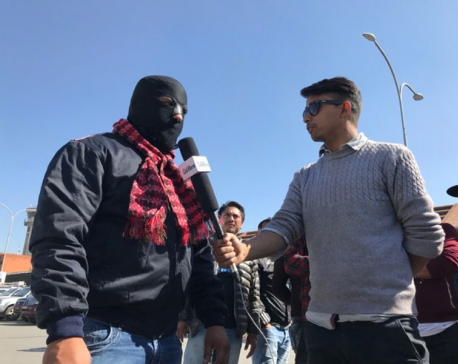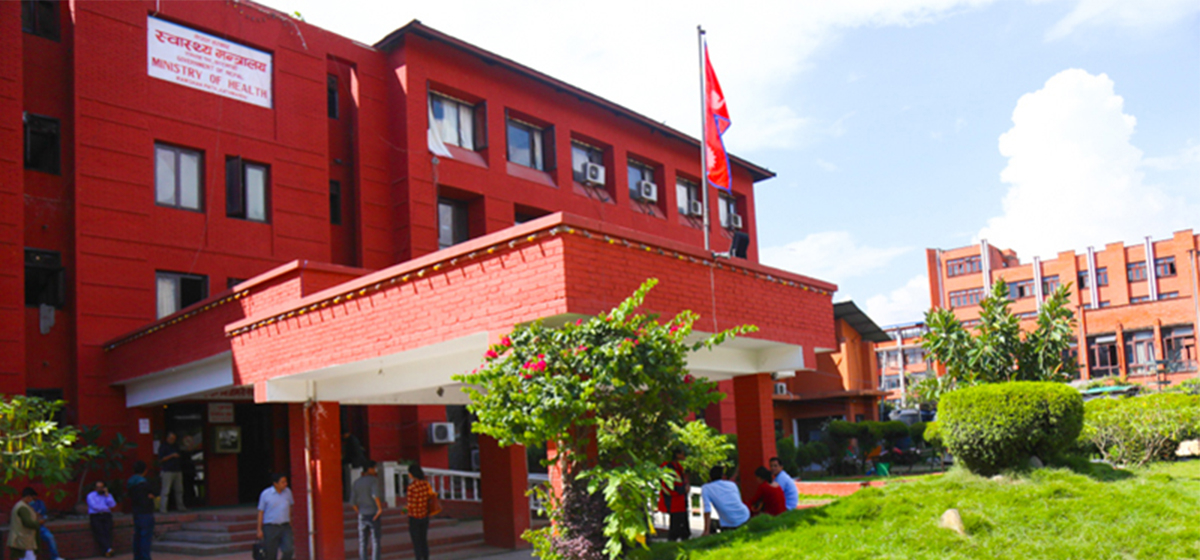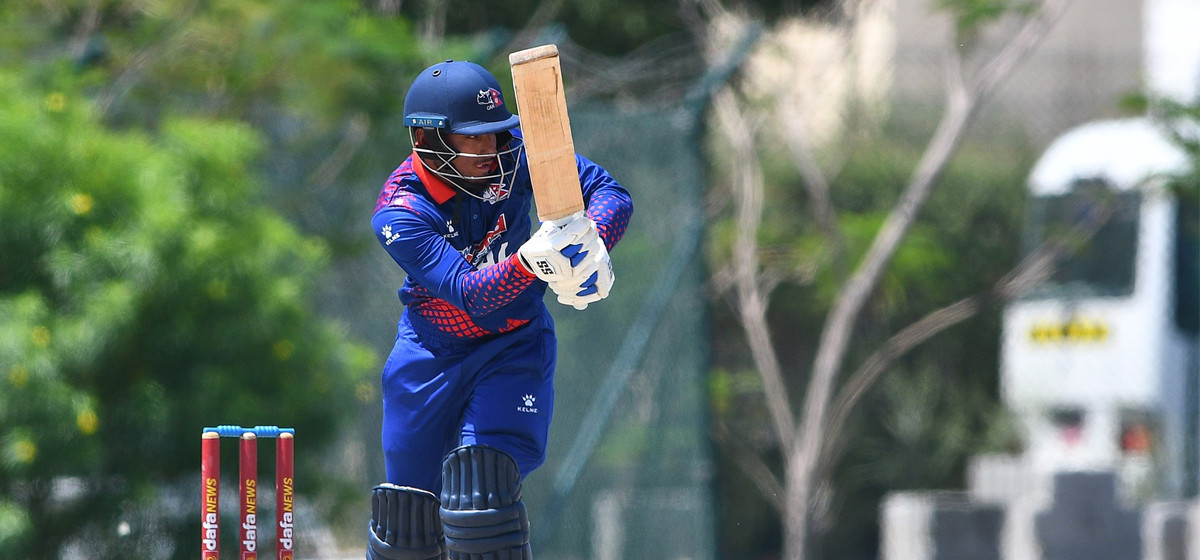
OR
New book says Israeli attack on USS Liberty in 1967 was ordered by LBJ
Published On: June 8, 2018 04:01 PM NPT By: Agencies

COlEBROOK June 8: With a North Country native at its core, a book to be released this fall will argue that then-President Lyndon Johnson ordered the Israeli Defense Forces to attack and sink, with no survivors, the USS Liberty on June 8, 1967 in an effort to promote regime change in Egypt.
“Blood in the Water: How the US and Israel Conspired to Ambush the USS Liberty” by Joan Mellen, a professor of English and creative writing at Temple University in Philadelphia, explores this tragic episode of an attack by one of America’s allies that resulted in dozen of American deaths and nearly 200 injuries.
Deep in the midst of the Cold War, the NSA wanted to hear everything that the then-Soviet Union and its allies or proxies were saying anywhere in the world. The 456-foot Liberty — whose specialty was gathering electronic communications — was accordingly sent around the world.
On June 5, 1967, when Israel launched a strike against Egypt, Jordan and Syria — the so-called Six-Day War — she was ordered to proceed “at best speed” to the eastern Mediterranean Sea.
While Cmdr. William McGonagle, the ship’s captain, and his crew of 99 sailors directed the Liberty toward the Sinai Peninsula, inside the vessel, then-Lt. Cmdr. David Edwin Lewis, the Liberty’s chief intelligence officer and a 1949 graduate of Colebrook Academy, received a terse order for himself and the 194 other communications gatherers under his command: “Find out who’s doing what to whom.”
“But Israel,” said Lewis, during an interview last Wednesday at his Colebrook home, “didn’t want that” and on June 8, 1967, its military attacked the Liberty with the intent of sending her to the bottom with all hands.
Israel has repeatedly said the incident was a tragic error caused by the fog of war during which the Liberty was confused with an Egyptian vessel. Israel quickly apologized for the attack that killed 34 crew members, including a civilian, and injured 173 others, and it also paid financial compensation to the victims and the U.S. government.
The day of the attack was “a beautiful day,” recalled Lewis. Israeli planes had flown over the Liberty nine times prior to the strike, including once that was so close that sailors were able to see and wave to the pilots, Lewis said. It was apparent that Israel knew who the Liberty was.
In the attack,McGonagle was able to dodge four torpedoes before the fifth struck the Liberty midship, ripping a hole in her side, and covering Lewis, who had been applying a tourniquet to a sailor’s bleeding leg, in a quarter-inch of heavy, burnt naval paint. The impact of the blast destroyed both of Lewis’ eardrums while the heat seared his eyes shut.
“I was one of the very, very lucky ones,” Lewis said. “Everybody around me was killed instantly.”
Lewis said he feels personally responsible for what happened to the Liberty, explaining that the day before the attack McGonagle asked him whether moving the Liberty further out to sea would affect communications-gathering. Lewis said it would.
As he recuperated, Lewis learned that James Terry Halbardier, an electronics technician 3rd Class, saved the heavily damaged Liberty from more destruction.
Although under fire, Halbardier, who later received the Silver Star, ran a coaxial cable across the deck to the sixth Liberty antenna, which had been inactive at the time of the attack, allowing an SOS to be sent to the Sixth Fleet. The message was seemingly also heard by the Israelis, who immediately ceased their attack.
But help for the Liberty did not arrive with equal alacrity and, as Lewis later learned, there was a nefarious reason for the delay.
While recovering aboard the carrier USS America, Lewis said he had a conversation with Adm. Lawrence R. Geis, the Sixth Fleet’s carrier division commander, who “swore me to secrecy for his lifetime” and then shared that the Fleet had twice launched relief aircraft to the Liberty and that each time they had been recalled by Secretary of Defense Robert McNamara.
When Geis challenged the second recall, Johnson came on the phone himself, the admiral told Lewis, who remembered Geis quoting the President saying that “I don’t give a damn if the ship sinks and all the Americans are killed. I will not embarrass my ally.”
In 2003, an independent commission released the Moorer Report that took a hard look at the incident.
The commission wrote that on June 8, 1967, the Israelis had aerially surveilled the Liberty for eight hours before launching an attack that lasted about 25 minutes “during which time unmarked Israeli aircraft dropped napalm canisters on USS Liberty’s bridge, and fired 30mm cannons and rockets into our ship, causing 821 holes, more than 100 of which were rocket-size; survivors estimate 30 or more sorties were flown over the ship by a minimum of 12 attacking Israeli planes, which were jamming all five American emergency radio channels.”
Now 87 and the oldest survivor of the Liberty, Lewis keeps trying to understand why Israel did what it did 51 years ago Friday and he comes to some of the same conclusions that others, including Mellen, have reached: that the U.S. and Johnson had decided to destabilize Egyptian President Gamal Abel Nasser by blaming his country for the attack.
Asked what he hopes will happen when “Blood in the Water” is released, Lewis replied that he’d be happy if the book educated more people about what happened to the USS Liberty and why.
“It’s frustrating that the American people know nothing about this and that the U.S. perpetrated it,” he said.
You May Like This

Who was the masked man landing at TIA by Indian aircraft?
KATHMANDU, Nov 6: A masked man landed at Tribhuvan International Airport at 10:30 am from an Air India aircraft on Monday.... Read More...

Dahal terms Madi attack biggest mistake by Maoists
CHITWAN, Nov 5: CPN (Maoist Center) Chairman and former prime minister Pushpa Kamal Dahal has said that the killing of 38... Read More...

‘I was wrongfully shot by police’
BARDIYA, Dec 30: Ram Bahadur Shahi, a local of Deudakala in Bardiya district who was shot by police on suspicion of... Read More...


Just In
- New book by Ambassador K V Rajan and Atul K Thakur explores complexities of India-Nepal relations
- Health ministry warns of taking action against individuals circulating misleading advertisements about health insurance
- UAE secures spot in ACC Premier Cup final, defeating Nepal by six wickets
- NC to boycott Gandaki Province Assembly, submits letter to Speaker
- 850 grams of gold seized from Indian national at TIA
- Rupandehi District Court orders to release Dipesh Pun on a bail of Rs 400,000
- Teachers’ union challenges Education Minister Shrestha's policy on political affiliation
- Nepal sets target of 120 runs for UAE in ACC Premier Cup












_20240311121839.jpg)


Leave A Comment